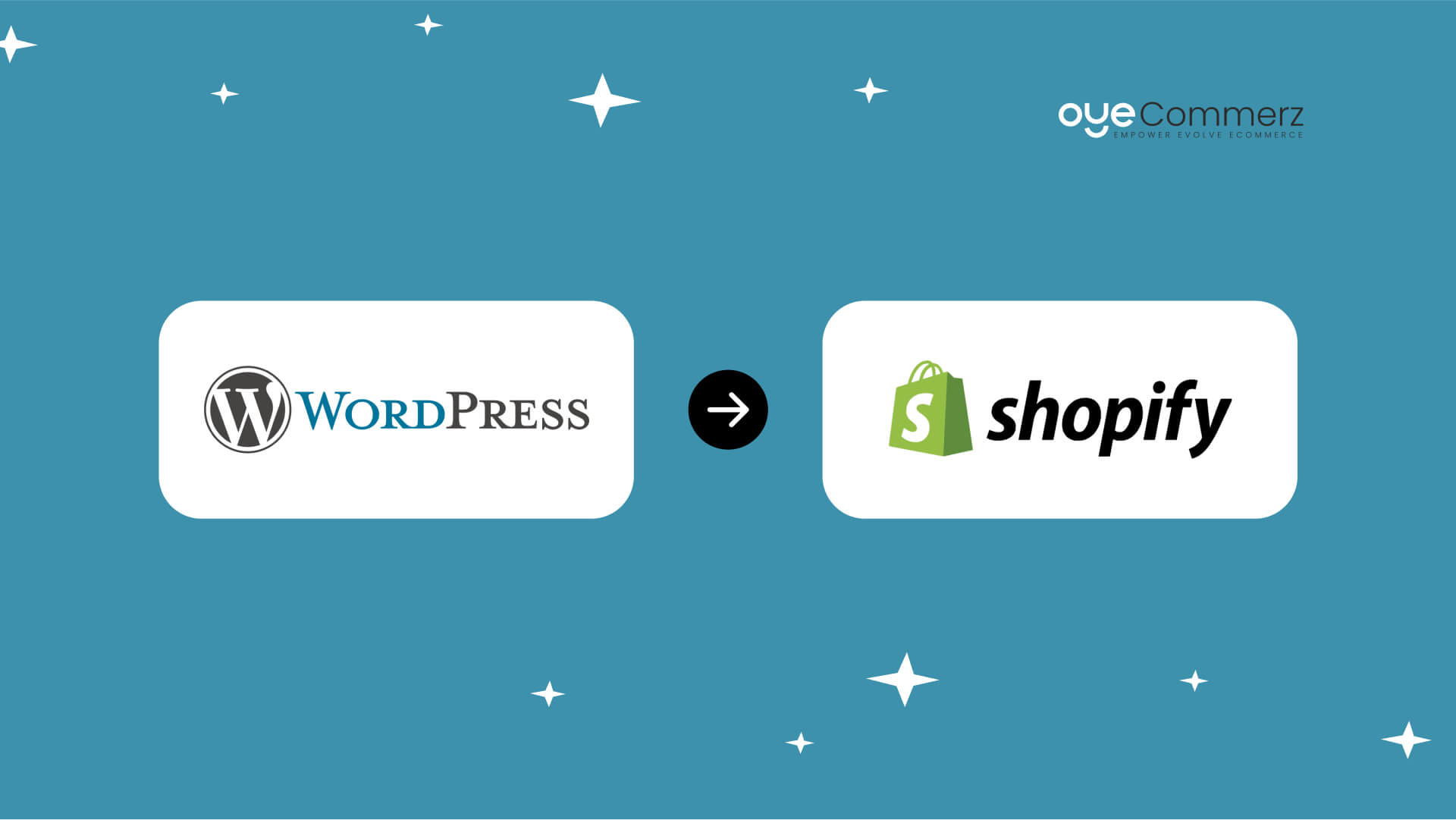Transitioning from WP to Shopify marks an exciting step in optimizing your online store operations. As companies grow, selecting a platform that aligns with growth potential, user experience, and flexibility becomes crucial. Shopify is widely recognized as a favorite for online merchants, providing unmatched adaptability, data protection, and user-friendliness. In this guide, we will delve into the transformative impact of this migration, discuss the benefits, and provide practical tips to facilitate a seamless transition.
1. Top Reasons to Transition from WP to Shopify
WordPress, paired with WooCommerce, continues to support countless online stores. Nevertheless, as businesses expand, issues like reliance on plugins, data risks, and technical complexities often obstruct growth. Shopify, designed explicitly for e-commerce, addresses these issues with an all-in-one, intuitive platform. Statistics supports this shift—Shopify powers over 4.4 million stores worldwide, with a documented 10% increase in sales conversion rates for numerous merchants post-switch.
2. Key Benefits of Shopify for E-commerce Success
Shopify’s powerful platform caters for expanding brands. Its standout benefits are:
- Effortless Design Flexibility: Shopify offers over 80 professionally designed themes.
- Integrated Tools: Capabilities such as Shopify Payments and integrated SEO save time and effort.
- International Expansion: Multi-currency support and localization features empower brands to expand internationally.
Additionally, Shopify boasts an availability percentage of 99.98%, guaranteeing your store is always operational.
3. Preparing for WP to Shopify Migration
Prior to starting the migration process, assess your existing setup. Analyze inventory details, customer details, and search engine rankings. Tools like Shopify’s Migration Kit or third-party solutions help ease the transition. Create a comprehensive plan, ensuring all resources—item details, images, and blog content—are ready for seamless import.
4. Data Migration: A Critical Step
Data migration is a cornerstone of a smooth platform switch. When moving from WP to Shopify, prioritize:
- Inventory Details: SKU, descriptions, and groupings.
- Customer Data: Emails, purchase records, and custom fields.
- Search Engine Considerations: Preserve meta tags, URLs, and forwarding paths to avoid SEO losses.
Use apps like LitExtension to facilitate seamless migration while reducing mistakes.
5. Tailoring Your Shopify Store to Fit Your Brand
After the move, customizing your Shopify store helps it aligns with your brand. Utilize Shopify’s drag-and-drop editor to create layouts with ease. Shopify's templates are mobile-responsive, ensuring a smooth user experience across devices—a critical factor, given 74% of e-commerce traffic comes from mobile users.
6. How to Protect Your SEO Rankings When Switching Platforms
Search engine optimization is crucial for preserving your online presence during migration. Shopify is highly optimized for search engines with organized link formatting, preloaded features, and seamless blog integration. Make sure you:
- Implement 301 redirects for existing links.
- Enhance updated content with keyword-rich content.
- Leverage plugins like Plug in SEO to monitor performance post-migration.
7. Post-Migration Testing
After finishing the transfer, conduct thorough testing.
Review: - Page load times (Shopify delivers faster speeds compared to WordPress).
- Payment integration reliability and transaction flow.
- Mobile responsiveness.
Testing guarantees your store provides a seamless shopping journey from day one.
8. Real-Life Success Story
An example of effective platform switching is Gymshark, a sportswear WordPress migration to Shopify company that moved to Shopify. Post-migration, the company experienced a 60% boost in mobile sales and reduced site downtime. This showcases the potential of Shopify in driving online business success.
9. Overcoming Common Migration Issues
Migration is not without obstacles, such as information accuracy and adjusting tailored features. However, Shopify’s extensive assistance and third-party experts make overcoming these hurdles manageable. WordPress e-commerce migration Partnering with experienced Shopify developers helps guarantee a trouble-free transition.
10. Starting Your Journey with Shopify
Migrating from WordPress to Shopify marks a forward-thinking decision to online retail. By addressing scalability, simplifying management, and enhancing the customer experience, Shopify enables companies to succeed in competitive markets.
Conclusion
Transitioning from WP to Shopify is a strategic move that can significantly boost your e-commerce success. With a robust migration plan, the right tools, and expert support, you can unlock new growth opportunities.
Ready to make the leap? Let’s discuss how our Shopify migration services can transform your online store. Contact us now, or ask yourself: Is it time to seize Shopify’s advantages for your store?
